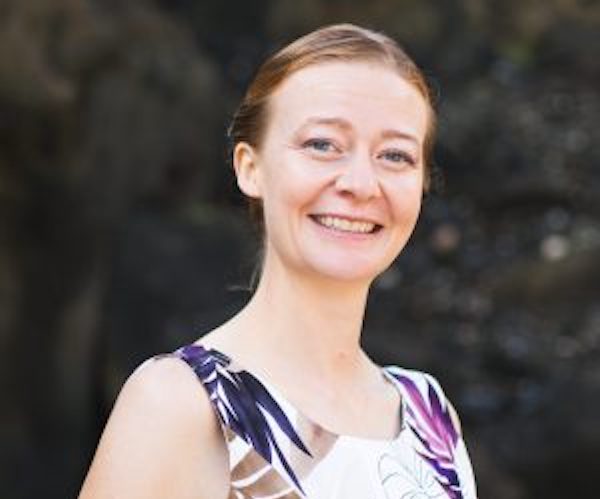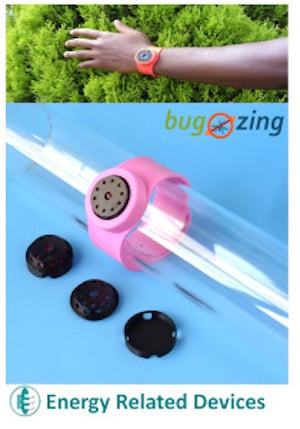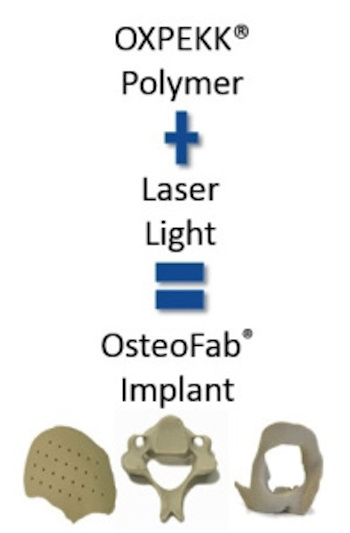
This article originates from Women In 3D Printing and is part of our effort to support the use of 3D printing technology by women. The article is re-published with permission.
Laura Hockaday Kang attended Cornell University in the Biomedical Engineering Department. During that time she was awarded a GAANN fellowship, a Morgan fellowship, and graduate research NSF fellowship. She became a research assistant in Jonathan Butcher’s Cardiovascular Developmental Bioengineering Laboratory in 2008, and joined the heart valve bioprinting project. Laura is presently working as a postdoc in Germany at the University of Muenster/UKM, in the Institute of Cell Dynamics and Imaging.
Nora Toure: Laura, could you detail your first experience with 3D Printing?
Laura Hockaday: My first experience with 3D printing was actually in 2008 when I joined Johnathan Butcher’s laboratory (Cardiovascular Developmental Bioengineering Laboratory) and the bioprinter team when I started graduate school at Cornell. I had previously worked at my Dad’s research and development company Energy Related Devices which gave me a great appreciation for building things and hands-on projects and design. I think some of the guys who worked there had mentioned 3D printing as a way of fabricating custom parts. I absolutely loved working at ERD on inventions, and prototypes, and the entire developmental process.
So when Dr. Butcher pitched the idea of building and even custom designing a living heart valve replacement using 3D printing, I was blown away. On the bioprinter project, we used a little printer called the Fab@Home Model I. It was an open source printer developed in Hod Lipson’s robotics laboratory by a Ph.D. student named Evan Malone. The bioprinter team in Dr. Butcher’s lab that 1st year was made up of 4 people – Phil, Nick, Kevin, and me. We started out printing anything that we could extrude through the printer syringes – cheese whiz, silicone sealant (the kind you use to grout the edges of your bathtub), and frosting (Ducan Hines actually worked the best for us). I’m pretty sure the first thing I ever printed was a silicone rubber cube. Later we started trying to print with hydrogels – polymers that would form gel networks that could be used to house living cells. I would say my first experience with the 3D printing was that it was fun, exciting, and a constant battle of troubleshooting. Phil, Nick, and Kevin were excited and enthusiastic, and we would stay up late modifying the printer, playing with different inks, and trying to convince cells to stay alive in our inks and scaffolds.

Nora Toure: You have a PhD in Biomedical Engineering, were doing research at the Cardiovascular Developmental Bioengineering Laboratory in NY, did a postdoc at Tufts University and just started another postdoc in Germany at the University of Muenster/UKM, in the Institute of Cell Dynamics and Imaging. Could you let us know what you are studying?
Laura Hockaday: One of the critical aspects of my thesis work, when I was in Dr. Butcher’s lab, was investigating cell viability under bioprinting conditions. I am still keen to keep trying to understand what happens to cells in bio-fabrication environments and to understand how cells behave and function in the 3D printed tissue. This is why I am now working at the Cell Dynamics and Imaging Laboratory in Münster Germany. I’m learning a lot about live cell imaging techniques. Right now I am studying the effects of oxidative stress on cells and I want to discover/develop better strategies to handle cells during 3D bioprinting.
![3D tissue printing of human aortic valves. Images left to right shows an aortic heart valve, a 3D printed hydrogel valve generated from a microCT scan of an aortic valve, and a 3D printed hydrogel valve with two valve cell-types (red and green) [Hockaday et al 2012,Duan et al 2013]](https://fabbaloo.com/wp-content/uploads/2020/05/slider-3d-tissue-printing_img_5eb0b46933ec0.jpg)
Nora Toure: What would be the usages of 3D bioprinting?
Laura Hockaday: (Note: “bioprinting” sometimes gets used as an umbrella term to refer to a variety of fabrication processes handling living and non-living biological materials, but when I say bioprinting I am referring to direct printing of cells and cells with biomaterials to build structures and patterns.)
3D bioprinting (using a solid freeform fabrication or additive manufacturing printer to directly manipulate, position, or encapsulate cells into 3D structures) is being explored as a tool to solve several different problems: 3D bioprinting is being explored by researchers as part of strategies in tissue engineering for fabricating replacement tissue, tissue for drug and cosmetic testing, tissue for diagnostics and modeling, food, and products like leather. There are also researchers using 3D bioprinting working on lab on a chip, sensors, production of construction or building materials, bioremediation, drug and toxin detection, desalination, and basic biological research.
In terms of commercial usage of 3D bioprinting: the companies in the space are focused on bioprinted tissue for in vitro drug or cosmetic testing, tissue grafts and scaffolds for reconstructive surgery. There are also companies that are selling printers, inks, assessment tools, and modeling software specifically for bioprinting.

Nora Toure: How far are we from 3D bioprinting becoming a reality?
Laura Hockaday: I guess I would say 3D bioprinting already is a reality. Although people can’t yet print whole people and functioning organ systems (like in the Bruce Willis movie The 5th Element) bioprinting is not science fiction. Although 3D bioprinted tissue with living cells is in preclinical stages (TelVido…), there is a company (Oxford Performance Materials) that has 3D printed biomaterial bone reconstructive implants (without cells) that obtained 510K clearance from the FDA (OsteoFab and SpineFab). I don’t want to hype bioprinting, but I think there is great progress in the field, and key milestones are being established so that there is movement towards feasible/practical application of bioprinting.
Nora Toure: Do you face specific challenges as a female searcher?
Laura Hockaday: I have been very lucky. I have worked with wonderful people in a fantastic company and in fantastic universities and I personally have not faced challenges specifically related to me being a girl. Also, my family and husband are really supportive of me pursuing research. I have the unbeatable role models of my Mom and Dad, so I grew up with the unshakable attitude that you can kick butt as a girl or as a boy and that science and engineering are fun and awesome. My Mom, who is a nuclear physicist at Los Alamos National Laboratory, is effectively a punch to the face or wake up call, to anyone who thinks that women can’t be scientists or that pursuing science means you can’t have a family. My mom did face challenges related to being a female in science. My parents both pursued careers in science and raised a family. Their path may not have been easy, but they are the touchstone that reassures me the path is possible.
Nora Toure: You are already building what is, for me, one of the most impactful uses of 3D Printing. In your opinion, what was the most impressive or impactful use of 3D printing you’ve seen so far?
Laura Hockaday: Prosthetics and cutting guides for complicated surgeries – those were really impressive to me when I’ve seen videos/talks. I’ve never seen a surgery done with one of these cutting guides. But considering the one maxillofacial surgery I saw in person, I can see why these could be so useful.
Nora Toure: What makes the 3D printing industry particularly interesting for you?
Laura Hockaday: The flexibility. The concept that you can realize an idea that you’ve drawn or designed into a physical object so quickly.
The potential to solve unusual problems. Things that can’t be built otherwise could be built using the technique.
The fact that it triggers new ideas…even new ethical debates.
3D printing is a good conversation topic. There is usually some element or application of 3D printing that random men and women can find interesting. Perhaps someone likes jewelry, or someone likes robots, or someone likes baking, or someone likes pasta, or someone likes crime dramas…..3D printing can connect all of these. Sort of like alcohol and sports – alcohol and sports let people who didn’t really know each other before having something to talk about or have an excuse to get together. To facilitate networking and formation of relationships. This could be good for business.
Nora Toure: What do you think of the 3D printing industry today? And how would you like to see it evolve?
Laura Hockaday: Okay, my interactions with the 3D printing industry so far have been – reading about it, using printers, dreaming/researching/plotting to get my own printer someday, talking to a few people who are now specifically trying to make a business selling bioinks and bioprinters, and ordering 3D printed plastic parts. I am not an expert by any means. I would love to see the companies in the bioprinting space succeed. For the companies, I have gotten the impression that it’s a rough business to target. For the people selling bioprinters – their customer base is hard to satisfy and doesn’t make a lot of repeat orders or orders often. Right now the customers for bioprinters are mostly researchers that have custom demands, big dreams, and strangely timed orders (for example grant money available at a particular time of year). Additionally, in many ways the biology and the material science is still unknown, which means once the customer gets the printer, tries out the ink or comes up with their own ink, and starts printing – the cells may not do what they expected. It’s cool, it’s exciting, but it’s a lot of troubleshooting. Right now there are amazing 3D bioprinters available on a spectrum – expensive and sleek with all the finest parts vs the little desktop printer that you can feel comfortable tinkering with. And many of these printers specialize in very different things/in terms of what can be controlled. I hope they can hang in there.
Overall I would love to see the applications different researchers are working on advance. Effectively, advancement by any bioprinting researcher helps the others because it is such a new field and everyone needs to know more about how to handle the materials, what are the biological outcomes…..
I’d like to see the industry evolve to the point where there are printable biomaterials that are characterized for their printable and mechanical characteristics but also their cell compatibility and bioactivity. As new inks are developed they can be characterized and evaluated in a standardized way and added to a new library of materials. For bioprinting to really take off, tissue engineering would need to also advance. This is also a rough business. Biological uncertainty and really tough technical and regulatory challenges. Ultimately I want tissue engineering to advance, and I see 3D bioprinting as a tool to further or expand tissue engineering.
Nora Toure: In your opinion, how could we encourage more women to become involved with 3D Printing?
Laura Hockaday: I think if you give kids access to 3D printers – maker spaces, schools, girlscouts, boyscouts – and do outreach activities you will get more people involved. 3D printing already crosses over between many activities that get stereotypically assigned to a particular gender (jewelry, cooking, shop class, biology, engineering). If people get experience with 3D printing as a tool they start wanting to use it for their own projects. Then it stops mattering if 3D printing “is for girls” or “is for boys”, the work is what matters.
Thank you for reading and for sharing!
We invite you to join Women in 3D Printing on LinkedIn and Facebook for further discussion.
Full references for the aortic valve conduits image:
3D bioprinting of heterogeneous aortic valve conduits with alginate/gelatin hydrogels.
Duan B, Hockaday LA, Kang KH, Butcher JT.
J Biomed Mater Res A. 2013 May;101(5):1255-64. doi: 10.1002/jbm.a.34420.
PMID: 23015540
Rapid 3D printing of anatomically accurate and mechanically heterogeneous aortic valve hydrogel scaffolds.
Hockaday LA, Kang KH, Colangelo NW, Cheung PY, Duan B, Malone E, Wu J, Girardi LN, Bonassar LJ, Lipson H, Chu CC, Butcher JT.
Biofabrication. 2012 Sep;4(3):035005. doi: 10.1088/1758-5082/4/3/035005.
PMID: 22914604

